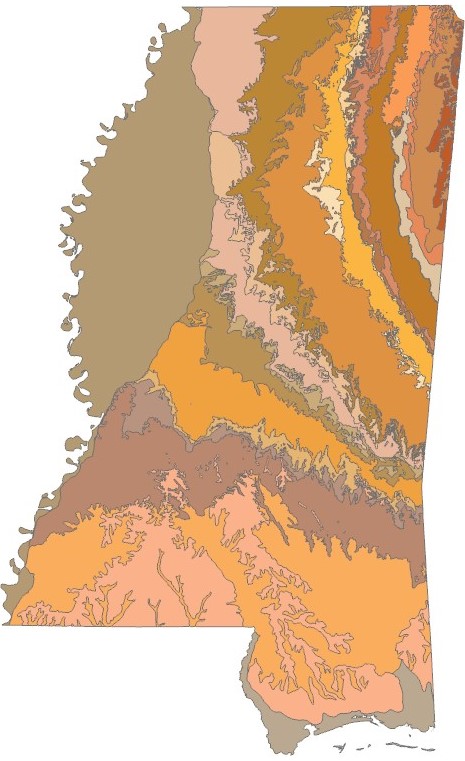

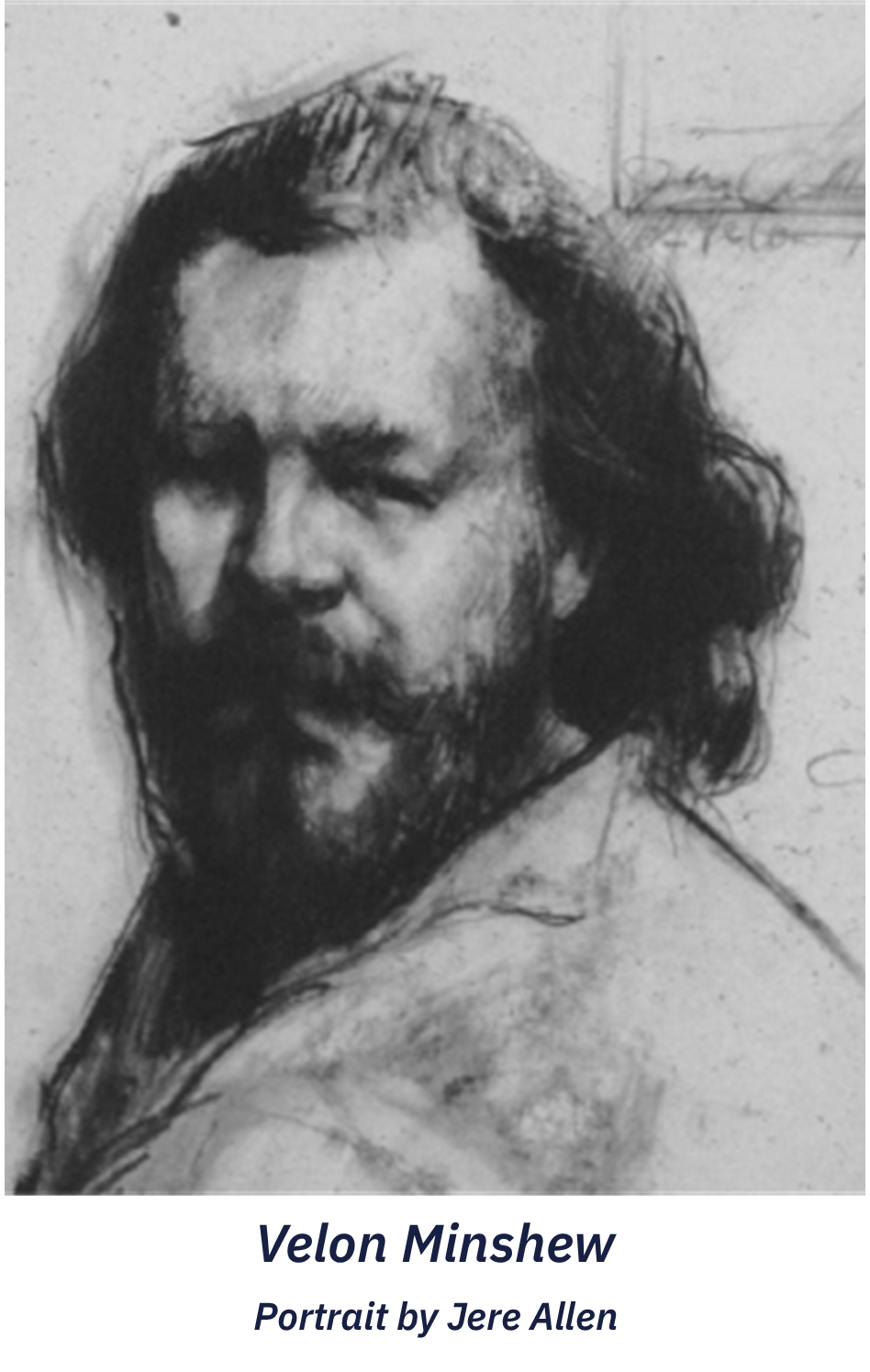 Dr. Velon H. Minshew, the first director of MMRI (from 1972-1982), was instrumental in its establishment. In the first few years of the institute, important geologic commodities such as clays, sands, and lignite deposits were studied throughout the state. These early lignite studies provided important foundational information which aided the development of the Red Hills lignite mine and power plant in Ackerman, Mississippi. Dr. Minshew was a remote sensing pioneer and utilized early Landsat data for structural studies of the state. Pivotal work in these early studies came from students, and mentoring and supporting students has been an important element of our mission from the very beginning. Dr. Minshew left his position as director in 1982 to enter the private sector.
Dr. Velon H. Minshew, the first director of MMRI (from 1972-1982), was instrumental in its establishment. In the first few years of the institute, important geologic commodities such as clays, sands, and lignite deposits were studied throughout the state. These early lignite studies provided important foundational information which aided the development of the Red Hills lignite mine and power plant in Ackerman, Mississippi. Dr. Minshew was a remote sensing pioneer and utilized early Landsat data for structural studies of the state. Pivotal work in these early studies came from students, and mentoring and supporting students has been an important element of our mission from the very beginning. Dr. Minshew left his position as director in 1982 to enter the private sector.Dr. James Robert (Bob) Woolsey (director from 1982-2008) assumed the MMRI director role in 1982, after serving two years as associate director. A veteran of the United States Navy, Dr. Woolsey earned his Ph.D. in Geology from the University of Georgia, Athens. A distinguished geoscientist and visionary leader, Dr. Woolsey spearheaded the exponential growth of the Institute, expanding its mineral research efforts both domestically and internationally, including in Africa, Belize, and Russia—where he was honored with an honorary doctorate from the Moscow Mining Institute.
In 1988, the U.S. Congress authorized the establishment of 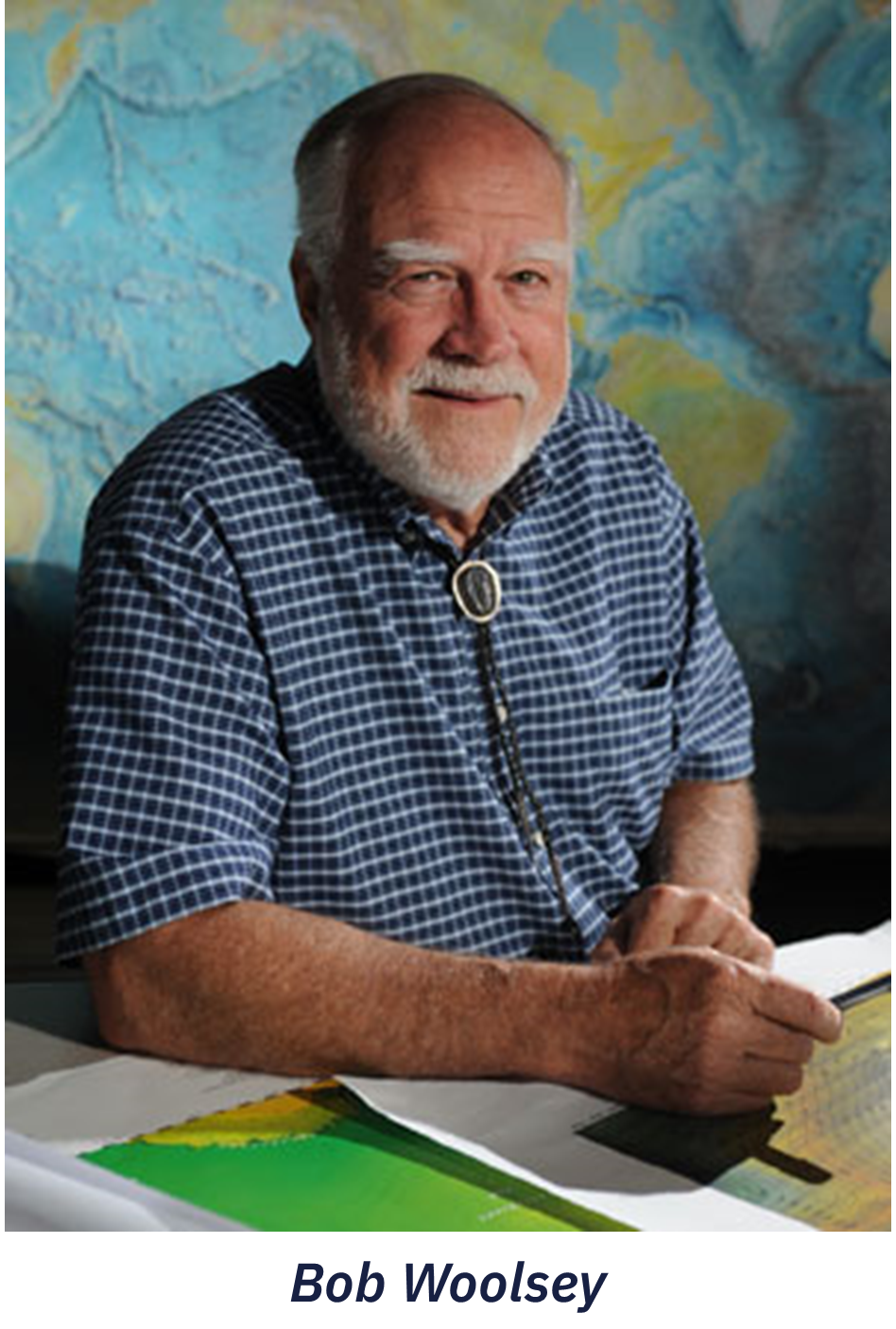 marine mineral research centers as part of the national Minerals Institutes Program. Under Dr. Woolsey’s leadership, the University of Mississippi was selected as the host institution for the new Marine Mineral Technology Center (MMTC), with Dr. Woolsey appointed as its first director. Woolsey acquired the vessel Kit Jones which became the only University of Mississippi Research Vessel. In 1996, the program was reauthorized by Congress under the Marine Mineral Resources Research Act, and MMTC was renamed the Center for Marine Resources and Environmental Technology (CMRET), becoming the marine research branch of MMRI. Oversight of CMRET was transferred in 1998 to the Minerals Management Service (now BOEM), due to the agency’s jurisdiction over mineral leasing on the Outer Continental Shelf (OCS).
marine mineral research centers as part of the national Minerals Institutes Program. Under Dr. Woolsey’s leadership, the University of Mississippi was selected as the host institution for the new Marine Mineral Technology Center (MMTC), with Dr. Woolsey appointed as its first director. Woolsey acquired the vessel Kit Jones which became the only University of Mississippi Research Vessel. In 1996, the program was reauthorized by Congress under the Marine Mineral Resources Research Act, and MMTC was renamed the Center for Marine Resources and Environmental Technology (CMRET), becoming the marine research branch of MMRI. Oversight of CMRET was transferred in 1998 to the Minerals Management Service (now BOEM), due to the agency’s jurisdiction over mineral leasing on the Outer Continental Shelf (OCS).
In October 1999, through Dr. Woolsey’s initiative, the Gulf of Mexico Gas Hydrates Research Consortium was formed, bringing together leading experts from 17 academic institutions and industry. Jointly supported by NOAA, MMS, and DOE, the consortium identified a gas hydrate mound in Mississippi Canyon Block 118 (Northern Gulf of Mexico) as the site for the first permanent seafloor observatory in the region.
Between 1999 and his untimely death in 2008, Dr. Woolsey led MMRI–CMRET through a decade of groundbreaking research in marine minerals, gas hydrates, seafloor exploration, underwater robotics, and sensor development. His legacy endures not only in the Institute’s achievements but also in the many young scientists he mentored—including one who would eventually succeed him as director.
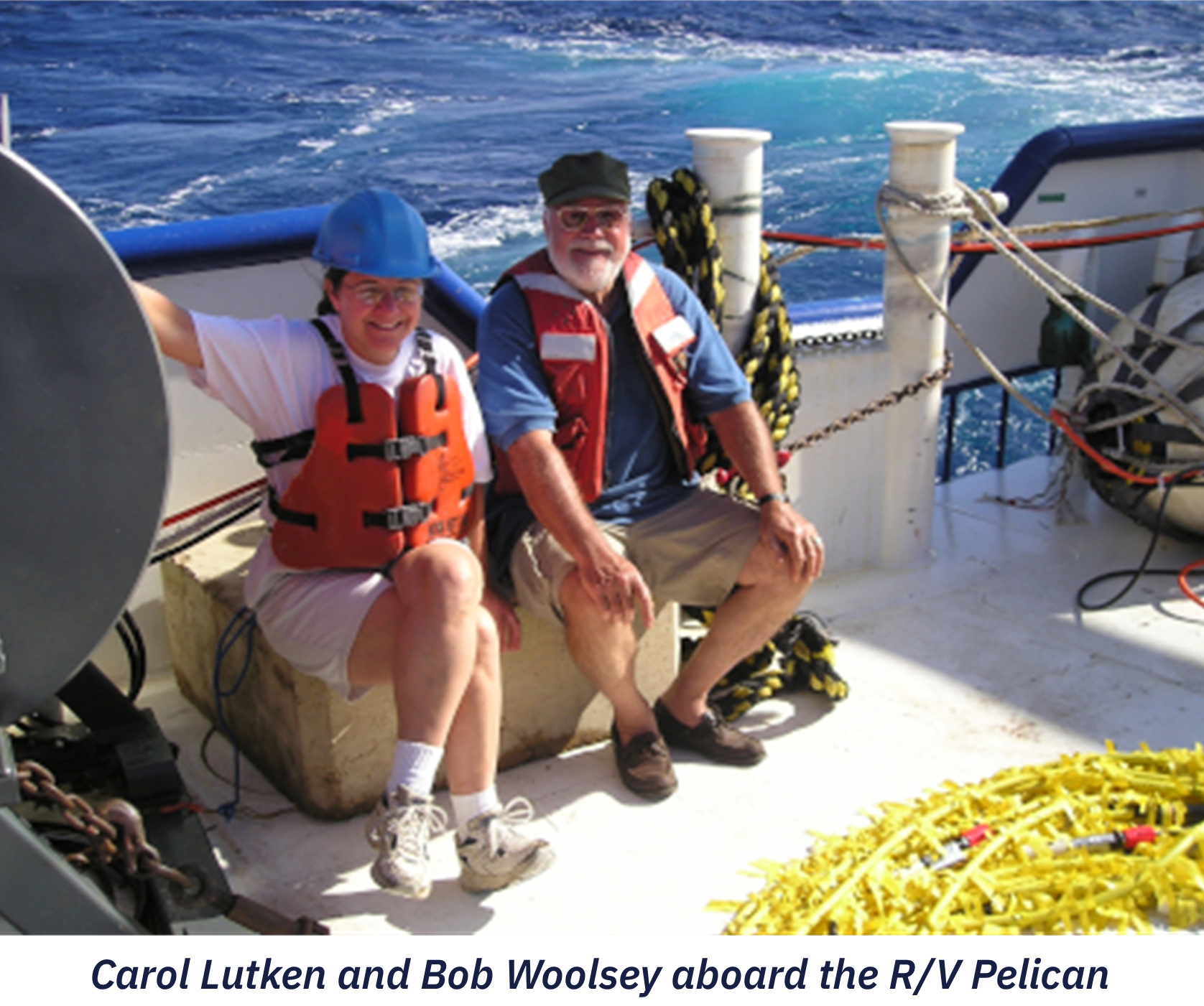 Following his passing, from 2008 to 2010, Mrs. Carol Blanton Lutken served as interim director. A brilliant marine geologist with a Master’s degree in Paleontology from Duke University, Mrs. Lutken had been a dedicated MMRI scientist since 1996 and associate director since 2006. During her tenure, she skillfully guided the Institute through a time of transition. Under her leadership, MMRI secured additional funding from the Department of Energy’s National Energy Technology Laboratory (NETL) to investigate fracture-filled gas hydrates using resistivity methods. She also played a pivotal role in obtaining a Rapid Response Grant from the National Science Foundation to monitor Mississippi River outflow during the historic 2010 Gulf of Mexico flood.
Following his passing, from 2008 to 2010, Mrs. Carol Blanton Lutken served as interim director. A brilliant marine geologist with a Master’s degree in Paleontology from Duke University, Mrs. Lutken had been a dedicated MMRI scientist since 1996 and associate director since 2006. During her tenure, she skillfully guided the Institute through a time of transition. Under her leadership, MMRI secured additional funding from the Department of Energy’s National Energy Technology Laboratory (NETL) to investigate fracture-filled gas hydrates using resistivity methods. She also played a pivotal role in obtaining a Rapid Response Grant from the National Science Foundation to monitor Mississippi River outflow during the historic 2010 Gulf of Mexico flood.
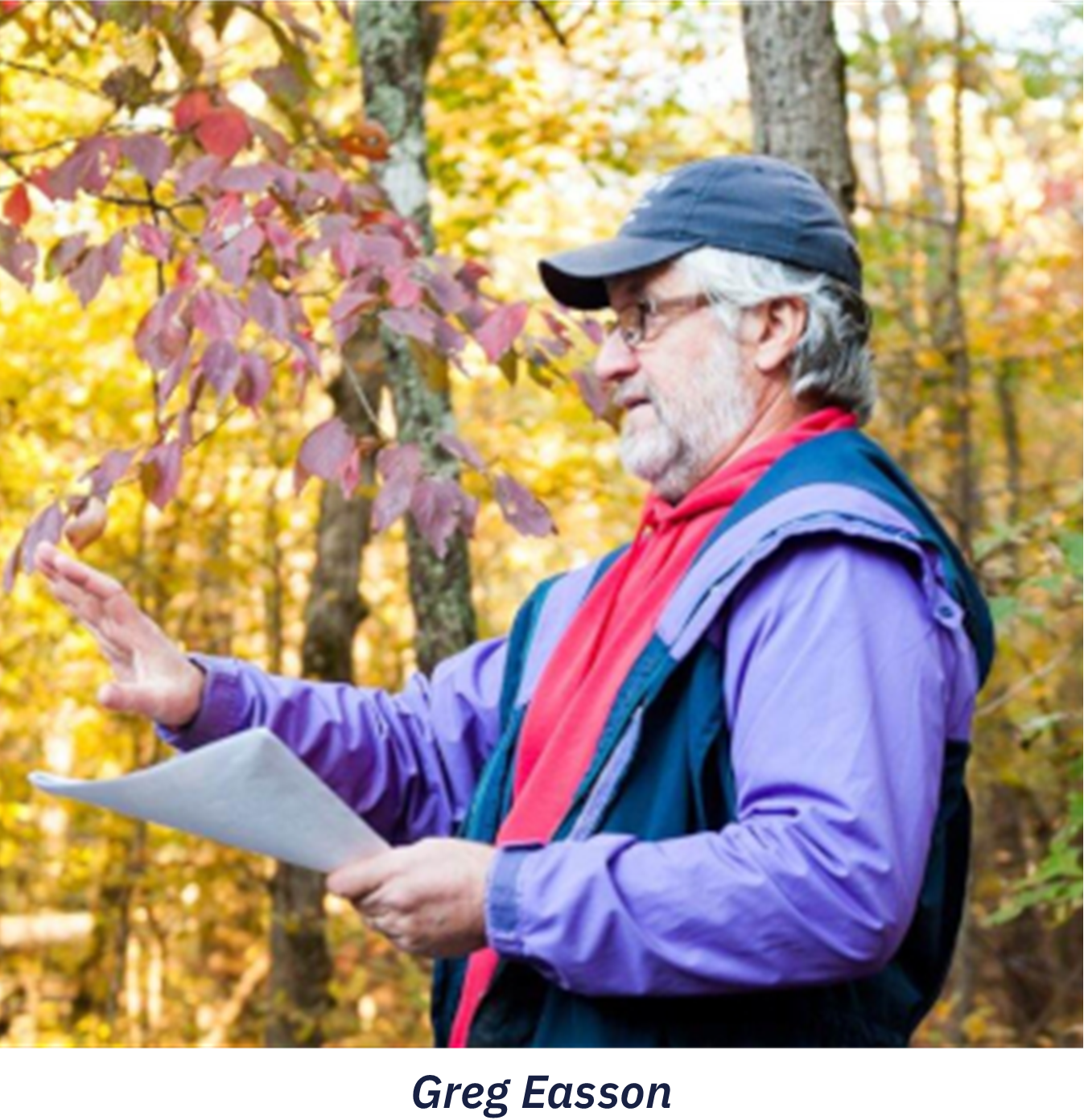 Terrestrial studies continue, and MMRI recently assisted with determining the reserve of an operating bentonite mine. The acquisition of a Giddings drill rig, which is shared with the Department of Geological and Geological Engineering, was an important addition to the institute. An investigation of heavy minerals in Upper Cretaceous through lower Eocene sands of north Mississippi is ongoing. A cooperative study with the USGS in 2021 examined a potential fault under the Washington Monument, the Capitol Building, and other important structures in Washington, D.C., and utilized geophysical methods to image the subsurface. This is an ongoing project.
Terrestrial studies continue, and MMRI recently assisted with determining the reserve of an operating bentonite mine. The acquisition of a Giddings drill rig, which is shared with the Department of Geological and Geological Engineering, was an important addition to the institute. An investigation of heavy minerals in Upper Cretaceous through lower Eocene sands of north Mississippi is ongoing. A cooperative study with the USGS in 2021 examined a potential fault under the Washington Monument, the Capitol Building, and other important structures in Washington, D.C., and utilized geophysical methods to image the subsurface. This is an ongoing project.  Dr. Leonardo (Leo) Macelloni (from 2024-present) became the fourth director of the Mississippi Mineral Resources Institute (MMRI) in August 2024. A native of Rome, Italy, Dr. Macelloni holds a Ph.D. in Applied Geophysics from the prestigious La Sapienza University of Rome. Dr. Macelloni returned to MMRI after several years in the oil and gas industry and six years of service as Associate Director of the Hydrographic Science Research Center at the University of Southern Mississippi, based at the Stennis Space Center. His connection to MMRI dates back to 2003, when he first joined the Institute as a visiting Ph.D. student. He later served as Assistant and then Associate Research Professor from 2008 to 2012. Having directly experienced the Institute’s “golden age” under the leadership of Dr. Bob Woolsey—whom he proudly considers a mentor—Dr. Macelloni now looks forward to guiding MMRI into its next chapter, building upon its legacy of excellence in mineral and marine resource research.
Dr. Leonardo (Leo) Macelloni (from 2024-present) became the fourth director of the Mississippi Mineral Resources Institute (MMRI) in August 2024. A native of Rome, Italy, Dr. Macelloni holds a Ph.D. in Applied Geophysics from the prestigious La Sapienza University of Rome. Dr. Macelloni returned to MMRI after several years in the oil and gas industry and six years of service as Associate Director of the Hydrographic Science Research Center at the University of Southern Mississippi, based at the Stennis Space Center. His connection to MMRI dates back to 2003, when he first joined the Institute as a visiting Ph.D. student. He later served as Assistant and then Associate Research Professor from 2008 to 2012. Having directly experienced the Institute’s “golden age” under the leadership of Dr. Bob Woolsey—whom he proudly considers a mentor—Dr. Macelloni now looks forward to guiding MMRI into its next chapter, building upon its legacy of excellence in mineral and marine resource research.